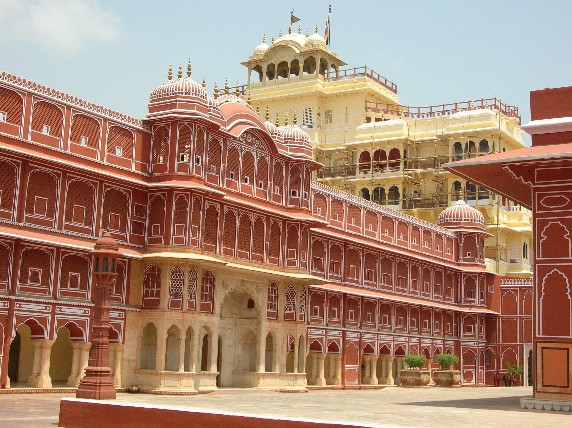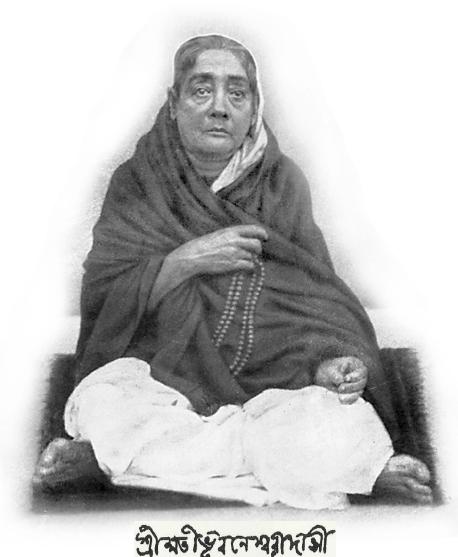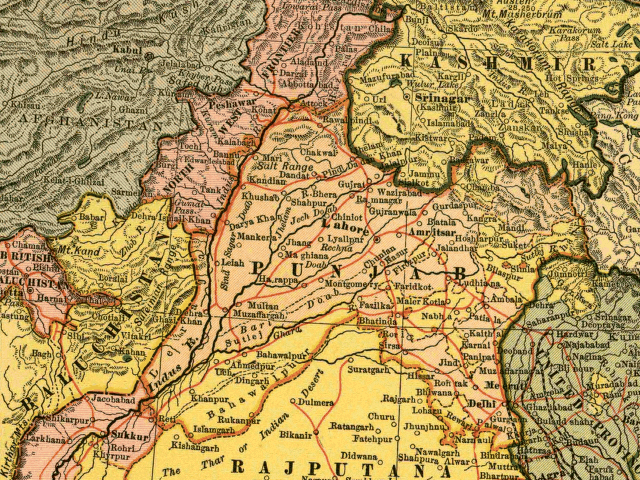|
Khetri Mahal
Khetri Mahal (Hindi: खेतड़ी महल ), also known as the Wind Palace, whose ruins are an example of palace architecture in the India, Indian state of Rajasthan. History Khetri Mahal was constructed by Bhopal Singh around 1770. Bhopal Singh was the grandson of Sardul Singh. Maharaja Sawai Pratap Singh of Jaipur built his Hawa Mahal, also known as the Wind Palace, on the model of the Khetri Mahal, in 1799. Khetri in itself was considered to be the second wealthiest ‘Thikana’ under Jaipur. Bhopal Singh was killed in the Loharu_Fort#Second, Second battle of Loharu, in which he tried to capture the Loharu Fort—one of 33 thikanas of Shekhawati rulers, at the place where he was cremated in Loharu, roughly from Loharu Fort, a commemorative chhatri was built which still survives. Between 1870 and 1901, Ajit Singh of Khetri reigned as a ruler of the Shekhawat dynasty of the Indian state of Khetri. Architecture Khetri Mahal is located behind a series of lanes. It is ... [...More Info...] [...Related Items...] OR: [Wikipedia] [Google] [Baidu] |
Loharu Fort
Loharu Fort, built in 16th century, is a state protected archaeological monument in Loharu town in Haryana state of India. Goibibo.Loharu Fort, Bhiwani, to be state-protected monument The Tribune, 27 Aug 2021. Fort is part of interstate Shekhawati region which lies on the either side of Haryana- border in the sandy |
Loharu Fort
Loharu Fort, built in 16th century, is a state protected archaeological monument in Loharu town in Haryana state of India. Goibibo.Loharu Fort, Bhiwani, to be state-protected monument The Tribune, 27 Aug 2021. Fort is part of interstate Shekhawati region which lies on the either side of Haryana- border in the sandy |
Palaces In Rajasthan
A palace is a grand residence, especially a royal residence, or the home of a head of state or some other high-ranking dignitary, such as a bishop or archbishop. The word is derived from the Latin name palātium, for Palatine Hill in Rome which housed the Imperial residences. Most European languages have a version of the term (''palais'', ''palazzo'', ''palacio'', etc.), and many use it for a wider range of buildings than English. In many parts of Europe, the equivalent term is also applied to large private houses in cities, especially of the aristocracy; often the term for a large country house is different. Many historic palaces are now put to other uses such as parliaments, museums, hotels, or office buildings. The word is also sometimes used to describe a lavishly ornate building used for public entertainment or exhibitions such as a movie palace. A palace is distinguished from a castle while the latter clearly is fortified or has the style of a fortification, whereas a pa ... [...More Info...] [...Related Items...] OR: [Wikipedia] [Google] [Baidu] |
Rajput Architecture
Rajput architecture is a architectural style notable for the forts and palaces of the many Rajput rulers, which are popular tourist attractions, many of the Rajput forts are UNESCO World Heritage Site. Rajput architecture represents different types of buildings, which may broadly be classed either as religious These include temples, forts, stepwells, gardens, and palaces. The forts were specially built for defense and military purposes. The Mughal architecture greatly influenced indigenous Rajput styles of art and architecture. Rajput architecture continued well into the 20th and 21st centuries, as the rulers of the princely states of British India commissioned vast palaces and other buildings, such as the Albert Hall Museum, Lalgarh Palace, and Umaid Bhawan Palace. These usually incorporated European styles as well, a practice which eventually led to the Indo-Saracenic style.Michell, George (1990), ''The Penguin Guide to the Monuments of India, Volume 1: Buddhist, Jai ... [...More Info...] [...Related Items...] OR: [Wikipedia] [Google] [Baidu] |
Khetri
Khetri Nagar is the town in Jhunjhunu district of Rajasthan in India. It is a part of the Shekhawati region. Khetri consists of two towns, "Khetri Town" founded by Raja Khet Singhji Nirwan and "Khetri Nagar" which is about 10 km away from Khetri. Khetri Nagar, well known for its Copper Project, was built by and is under the control of Hindustan Copper Limited, a public sector undertaking under the Government of India. Khetri Nagar is also known as 'Copper'. There are many attached villages near Khetri Nagar like Manota Khurd, the people of this village was employed in mines. Khetri is full of heritage and diversity. People of various religions live with mutual cooperation and harmony here. Today this adorable part of India is the backward region due to lack of development. Khetri is the town and Tehsil in Jhunjhunu district of Rajasthan state in India. Total number of villages in this Tehsil is 106. Khetri Tehsil sex ratio is 914 females per 1000 of males. Average literacy ... [...More Info...] [...Related Items...] OR: [Wikipedia] [Google] [Baidu] |
Ajit Singh Of Khetri
Raja Ajit Singh Bahadur (16 October 1861 – 18 January 1901) was the ruler of the Shekhawat estate (thikana) of Khetri at Panchpana in Rajasthan between 1870 and 1901. He was born on 16 October 1861 at Alsisar. His father was Thakur Chattu Singh, a resident of Alsisar. Ajit Singh was later adopted to Khetri and after the death of Fateh Singh, he became the eighth king of Khetri in 1870. In 1876, he married Rani Champawatiji Sahiba and the couple had one son and two daughters. He died on 18 January 1901 at Sikandra, and was cremated at Mathura. Ajit Singh was a close friend and disciple of Swami Vivekananda. Swami Vivekananda went to Khetri and met Ajit Singh thrice in his lifetime— in 1891, 1893 and 1897. Ajit Singh is known for providing financial support to Vivekananda, and encouraging him to speak at the Parliament of the World's Religions at Chicago in 1893. From 1891 Ajit Singh started sending monthly stipend of 100 to Vivekanada's family in Kolkata. On 1 December 1898 ... [...More Info...] [...Related Items...] OR: [Wikipedia] [Google] [Baidu] |
Chhatri
''Chhatri'' are elevated, dome-shaped pavilions used as an element in Indo-Islamic architecture and Indian architecture. Originating as a canopy above tombs, they serve as decorative elements. The earliest example of chhatri being used in the Indian Subcontinent were found in the Shrine of Ibrahim in Bhadreswar, constructed between 1159 and 1175 AD. Chhatri are found particularly within Mughal architecture. The most notable surviving examples today are to be found at Humayun's Tomb in Delhi and the Taj Mahal in Agra. The Berar Sultanate in the Deccan added chhatris on buildings in its various capitals. Chhatri have also been used in Rajasthan and other parts of the Indian Subcontinent by both Muslim and Hindu rulers. Its origins are, however, Indo-Islamic. While chhatri in Shekhawati may consist of a simple structure of one dome raised by four pillars to a building containing many domes and a basement with several rooms. In some places, the interior of the chhatri is painted ... [...More Info...] [...Related Items...] OR: [Wikipedia] [Google] [Baidu] |
Loharu
Loharu (also known as Luharu) is a city, municipal committee and assembly constituency in the Bhiwani district of the Indian state of Haryana. It is the administrative headquarters of one of the four administrative sub-divisions of the district and covers 119 villages. It is also a railway junction station. The city's main commercial hub is its Anaaj Mandi, which was built by Sir Aminuddin Ahmed Khan in the year 1937. The Mandi is unique in design as it contains both residential and commercial premises for the merchants around a large central open space. It consists of 104 shops or 52 'Jodas' (couplet) as it was popularly called. The tax-free Mandi in its prime gathered goods from far and near for trade and contributed considerably to the prosperity in the region. Another attraction of the town is the bi-annual Camel fair held in the months of January and July. The Camels come from Rajasthan and other areas of Haryana, making it a colourful and festive venue. The present econ ... [...More Info...] [...Related Items...] OR: [Wikipedia] [Google] [Baidu] |
Hawa Mahal
The Hawa Mahal is a palace in the city of Jaipur, India. Built from red and pink sandstone, it is on the edge of the City Palace, Jaipur, and extends to the ''Zenana'', or women's chambers. The structure was built in 1799 by the Maharaja Sawai Pratap Singh, grandson of Maharaja Sawai Jai Singh, the founder of the city of Jaipur, India. He was so inspired by the unique structure of Khetri Mahal that he built this grand and historical palace. It was designed by Lal Chand Ustad. Its five-floor exterior is akin to a honeycomb with its 953 small windows called Jharokhas decorated with intricate latticework. The original intent of the lattice design was to allow royal ladies to observe everyday life and festivals celebrated in the street below without being seen, since they had to obey the strict rules of "purdah", which forbade them to appear in public without face coverings. This architectural feature also allowed cool air from the Venturi effect to pass through, thus making ... [...More Info...] [...Related Items...] OR: [Wikipedia] [Google] [Baidu] |
Jhunjhunu
Jhunjhunu is a city and capital of Jhunjhunu district in the state of Rajasthan. This city is in the northern state of Rajasthan, India and the administrative headquarters of Jhunjhunu District. History Jhunjhunu is a very old and historical district, which was founded by Jat chiefs and was later ruled by Chauhans. Mohammed Khan defeated Chauhans and conquered Jhunjhunu. It was taken back by the great Jhunjhar singh nehra and Shardul Singh Ji Shekhawat (descendant of Maharao Shekhaji) in 1730. Demographics In the 2011 India census, the town of Jhunjhunu had a population of 118,473 and a literacy rate of 73.58%. Transport Rail comes within the territory of the North Western Railway. Jhunjhunu city is connected through a broadgauge line to Sikar, Rewari, and Delhi. Railway Minister Suresh Prabhu flagged off two trains to mark the completion of Rs. 260 crore gauge conversion of the 122 km Loharu-Sikar railway line in Rajasthan. Both trains were flagged off by Prabhu t ... [...More Info...] [...Related Items...] OR: [Wikipedia] [Google] [Baidu] |
Jaipur
Jaipur (; Hindi Language, Hindi: ''Jayapura''), formerly Jeypore, is the List of state and union territory capitals in India, capital and largest city of the Indian States and union territories of India, state of Rajasthan. , the city had a population of 3.1 million, making it the List of cities in India by population, tenth most populous city in the country. Jaipur is also known as the ''Pink City'', due to the dominant colour scheme of its buildings. It is also known as the Paris of India, and C. V. Raman called it the ''Island of Glory''. It is located from the national capital New Delhi. Jaipur was founded in 1727 by the Kachhwaha Rajput ruler Jai Singh II, the ruler of Amer, India, Amer, after whom the city is named. It was one of the earliest planned cities of modern India, designed by Vidyadhar Bhattacharya. During the British Colonial period, the city served as the capital of Jaipur State. After independence in 1947, Jaipur was made the capital of the newly formed s ... [...More Info...] [...Related Items...] OR: [Wikipedia] [Google] [Baidu] |





